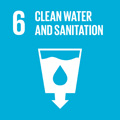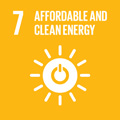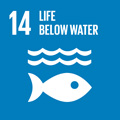- Docente: Renata Archetti
- Credits: 6
- SSD: ICAR/01
- Language: English
- Moduli: Renata Archetti (Modulo 1) Renata Archetti (Modulo 2)
- Teaching Mode: Blended Learning (Modulo 1) Blended Learning (Modulo 2)
- Campus: Ravenna
-
Corso:
Second cycle degree programme (LM) in
Offshore Engineering for Energy Transition (cod. 6056)
Also valid for Campus of Bologna
Second cycle degree programme (LM) in Civil Engineering (cod. 8895)
Campus of Bologna
Second cycle degree programme (LM) in Civil Engineering (cod. 8895)
Second cycle degree programme (LM) in Offshore Engineering (cod. 9249)
Second cycle degree programme (LM) in Offshore Engineering (cod. 9249)
Second cycle degree programme (LM) in Offshore Engineering (cod. 9249)
Second cycle degree programme (LM) in Offshore Engineering (cod. 9249)
-
from Sep 23, 2024 to Oct 08, 2024
-
from Oct 14, 2024 to Nov 11, 2024
Learning outcomes
At the end of the course the students are able to perform a basic characterisation of the ocean environment (sea water level, sea waves, currents and wind) and to estimate the climate and design conditions and sea actions on offshore and coastal structures. The course provides the basic knowledge to the assessment of wind and ocean energy conversion.
Course contents
The course will introduce and describe the processes that characterize the oceanic environment, as wind, tide, wave and currents, their loads and interaction with the structures, the assessment of the marine renewable energy (currents and waves) and basics on the devices typologies.
The course is organized in 3 parts:
Part 1 The sea environment 3 CFU
Part 2 Ocean Engineering 3 CFU
Part 3 Marine renewable energy 3CFU
1.The Sea environment 3 CFU
-Wind. The geostrophic approximation. Geostrophic wind. Measure of the wind. Force of the wind on the structures.
Exercise on the geostrophic wind estimation
-Sea water Level: astronomic tides, storme surges.
Currents.
-Sea Wave. Linear Theory. Dispersion relationship. Shallow water and deep water approximation.
Matlab exercises on the linear wave theory and superposition of waves
-Irregular waves- Wave statistics, wave spectra
Non-linear theory of waves
Wave transformation from offshore to onshore: shoaling-refraction -diffraction
Tsunamis
Exercise on the ocean environment with SWAN
Exercise on the Extreme waves conditions
2. Ocean engineering Sea –Structures Interactions
Interaction of currents with marine structures
Interaction of waves with marine structures: The calculation of forces on ocean structures:
-Structural element much smaller than wavelength – drag and inertia forces.
Morrison equation
Exercise: Estimation of forces on a pole using the Morrison equation
-Structural element comparable with wavelength – diffraction forces.
Application: Estimation of wave forces on a fixed structures
Floating Structures: Wave forces & motions theory
i.e. Floating breakwaters, floating docks, Offshore TLP Sparbuoys,
Exercises on the modeling of a floating body with an open source potential model (WEC-SIM)
3. Marine renewable energy
Renewable energy demand
Renewable energy from the offshore wind and from the sea: the actual numbers
Marine renewable energy resources, Principles of energy conversion from the sea:
- Waves;
- Tidal Range (tidal rise and fall),;
- Tidal Currents,;
- Ocean Currents, derived from wind-driven and thermohaline ocean circulation;
- Ocean Thermal Energy Conversion (OTEC);
- Salinity Gradients (osmotic power);
Wave Energy conversion (WEC) typologies;
Sea Current turbines.
Readings/Bibliography
R.G. Dean & R.A. Dalrymple, Water wave mechanics for engineers and scientists, Adv. Series on Ocean Engineering – vol. 2, World Scientific
Teaching methods
The teaching methods could be modify based on the COVID19 situation.
Please check my web page during the year.
The course is taught through lectures. Part of them are dedicated to the solution of practical problems, that will be developed at the computer.
Exercises with practical activities (i.e. computer programming and use of specific software) using Matlab and excel:
- statistics of extreme waves;
- dispersion relationship for evaluating wave transformation from off-shore to in-shore;
- reconstruction of the typical annual wave climate;
-Design of an ocean structure;
- Design of a point absorber.
Some lessons will be held by well known professionists in the research and design of coastal and ocean structures.
Assessment methods
The student will prepare for the exam a report of the exercises and simple application design that were developed during the course.
The preparation of the student will be assessed through an oral colloquium whose duration is about 30 minutes.
Higher grades will be awarded to students who demonstrate an outstanding understanding of the subject, a high ability for critical application, and a clear and concise presentation of the contents.
To obtain a passing grade, students are required to at least demonstrate a knowledge of the key concepts of the subject, some ability for critical application, and a comprehensible use of technical language .
A failing grade will be awarded if the student shows knowledge gaps in key-concepts of the subject, inappropriate use of language, and/or logic failures in the analysis of the subject.
Office hours
See the website of Renata Archetti
SDGs




This teaching activity contributes to the achievement of the Sustainable Development Goals of the UN 2030 Agenda.
